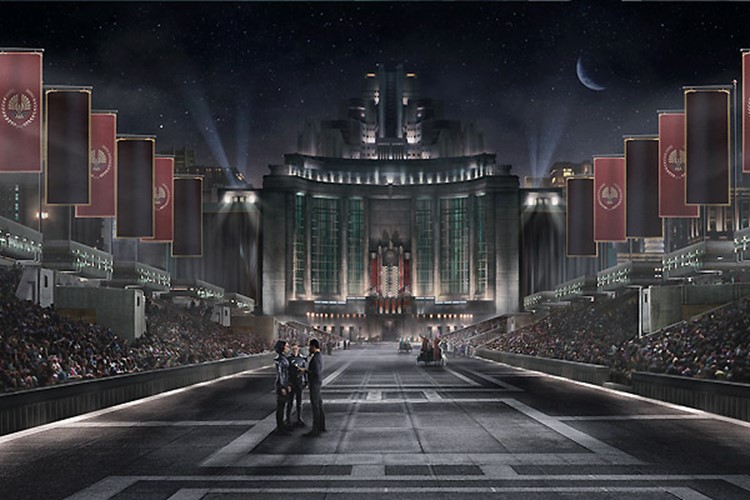How Much Does It Cost To Host The Hunger Games?
September 19, 2012 in Editorial

Outside of the Capitol, the 12 districts of Panem have incredibly low living standards. Every day, residents of the districts die of starvation, poor living and working conditions, a lack of healthcare, and—for those between the ages of 12 and 18—mandatory participation if chosen in the Hunger Games. Considering that each year the Hunger Games take place in a new extremely advanced (and presumably costly) dome controlled from the outside shown via telecast with no live spectators, the question has to be asked: how much do the Hunger Games cost Panem?
In our own world, the only event which could be compared to the Hunger Games would be the Olympics. Besides the honor of being a host for the Olympics, the only other advantage for the host city is profits from temporarily increased tourism during (and hopefully after) the games. But for the Olympics, the costs outweigh the profits: management for the “Bird’s Nest” stadium in Beijing estimates that, at the current rate, it will take approximately 30 years to recover the $480 million cost of its construction. Meanwhile, the “Water Cube” aquatics center lost $1 million last year in spite of a government subsidy and revenues from a water park now located within it. To only make matters worse, other venues sit abandoned.
Panem not only has to consider the costs of construction and waste of space but also the additional opportunity cost from the loss of 23 tributes per year; these deceased children could have been town officials, innovators of their time, or additional workers who could have made Panem a more productive country.

If we conservatively estimate that the advanced stadium depicted in the Hunger Games is equivalent to Beijing’s Bird’s Nest, then Panem’s authorities will have spent $480 million constructing the venue for the event. Add another $100 million for a lavish opening ceremony and the games cost Panem at least $580 million each time.
And what effect does this have on Panem’s economy? A recent Olympics host comparable to the Capitol is Athens in 2004. Both have small populations hosting big games. Athens’ deficit climbed to 6.1% of GDP and debt to 110.6% of GDP after games came to an end, arguably contributing to Greece’s current economic woes. No wonder the population rebelled. Resentment for the degree of poverty and the humiliation of having to send children to die each year for the Hunger Games would destabilize the economy of Panem.
Enjoyed this article? Then you’ll enjoy the rest of our coverage of The Hunger Games, where you can read what the population of Panem is. You can find this and other articles in our Editorials although for a selection of the best check out our Greatest Hits. And be sure to stay in touch:



I’m 8 years late lol but there is no cost to the event itself. The Capitol is supplied all of its necessary (and non necessary) resources from the districts at the cost of nothing but their labor. In other words, the Capitol obtains the resources for free from the servant districts. The arena is fueled by electricity powered by one of the districts, and all of its features are supplied by the remaining districts.
This is how the Hunger Games continued for 75 consecutive years. Because there are no mentioned trades with other countries (or other countries at all), the districts would simply have no currency. The citizens of the districts are supplied baseline necessities for free from the Capitol (although this is not always the case). With all of that being said, the only form of currency would reside within the Capitol itself, which is not much. If the Capitol is receiving all of their goods for free from the districts, then they would not need to pay any price for the construction of the arena, training center, or live events.
It is noted that in order for a tribute to receive a sponsorship while in the arena, there would have to be a PAYING sponsor. This money would come from the currency that circulates the Capitol and its inhabitants.
All in all, the districts use no currency, and thus the cost of the Games is null.
What about the gambling revenue?